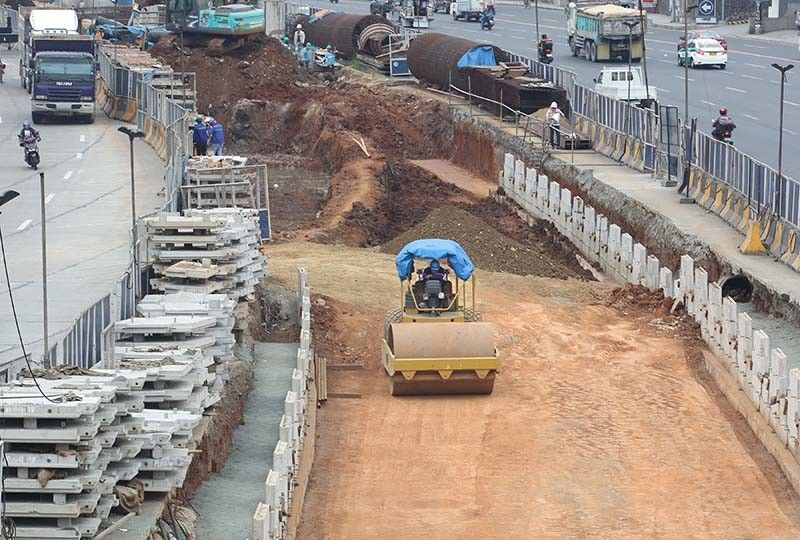Analysis: Hits and misses on the economic front

The country’s economy expanded by 6.1 percent during the fourth quarter of 2018, bringing the full-year average to 6.2 percent, the slowest in three years. While still decent by emerging market standards, the latest figure is underwhelming, dampening expectations that growth would pick up steam in the final quarter of the year.
The Asian Development Bank (ADB) and the World Bank predicted full-year growth to reach 6.4 percent and 6.5 percent, respectively. Both forecasts were already revised downwards by 0.4 percentage points.
The government’s economic managers also targeted a growth of at least 6.5 percent, down from its initial goal of 7 percent to 8 percent for 2018. This was perhaps the narrative that defined the past year—missed targets and lost opportunities despite optimism on the country’s prospects.
Household consumption, the country’s economic backbone, was adversely affected by higher commodity prices. Unsurprisingly, consumer expectations also reached its lowest level in years, reflecting the gloomier outlook. Much to the government’s relief, inflation is expected to ease in 2019.
In January, commodity prices registered a year-on-year increase of 4.4 percent, the lowest on record since March last year. The central bank already hiked interest rates by a total of 175 basis points, but decided to keep rates steady in its latest policy meeting this month. For 2019, some analysts expect the central bank to pare back interest rates in response to easing inflation.
Merchandise exports was also a disappointment, following a strong performance in 2017. In 2018, exports declined by 1.8 percent. As the year closed, even the exports of electronic products, a significant exports commodity, dropped by 15.2 percent.
Imports continued its double-digit expansion, expanding by 13.4 percent for the year, with increased receipts of capital goods and raw materials. The trade gap, however, is increasing and is now at its widest level.
After posting a record-high inflow in 2017, foreign direct investment contracted by 3.2 percent year-on-year for the first eleven months of 2018, with net inflows amounting to US$ 9.1 billion. This can be attributed to the outflows of investments from Western countries, as investments from our Asian neighbors failed to stem the tide. For 2018, FDI inflow is targeted to hit US$ 10.4 billion, a target that may be missed as FDI growth has softened in the last few months.
Across industries, manufacturing, which recently experienced some resurgence, only expanded by 3.2 percent, its weakest performance since 2011. National Economic and Development Authority Secretary Ernesto Pernia blamed the bleak performance on weak business confidence, policy uncertainties, and slower demand from key markets abroad. Agriculture continued to underperform yet again, growing by only 0.8 percent in 2018. The inflation debacle last year only highlighted the longstanding supply-side issues of the sector.
Despite the missed targets and underperformance in some sectors, there were some bright spots last year. Government spending increased by 12.8 percent in 2018. For 2019, however, the delayed passage of the budget and the election spending ban may knock a few percentage points off economic growth. To keep the momentum going, economic managers are seeking an exemption for priority public works projects from the election ban.
Capital formation expanded by 13.9 percent last year, supported by the continued rapid increase in investments in durable equipment and construction. In some ways, this is still a vote of confidence on the country’s prospects.
For 2019, the World Bank expects economic growth to improve to 6.5 percent, while ADB projects an expansion of 6.7 percent. Meanwhile, economic managers continue to push for an ambitious target: a GDP growth of at least 7 percent. Yet some analysts are less optimistic, projecting a more sober figure due to tighter domestic liquidity and higher interest rates, as well as external risks including the US-China trade war, which is expected to dampen global demand.
The election in May is a reminder for this administration that it has already reached the halfway mark. There were some hits and misses on the economic front. Yet the most recent figures reflect more of the latter.
With only three years left, government officials should work double time to ensure that the economy doesn’t lose steam. After all, the Duterte administration started off on a high note, buoyed by optimism that itcan finally introduce the reforms that its predecessors have not been able to.
Weslene Uy is an economic fellow at think tank Stratbase ADR Institute, a partner of Philstar.com.
- Latest
























